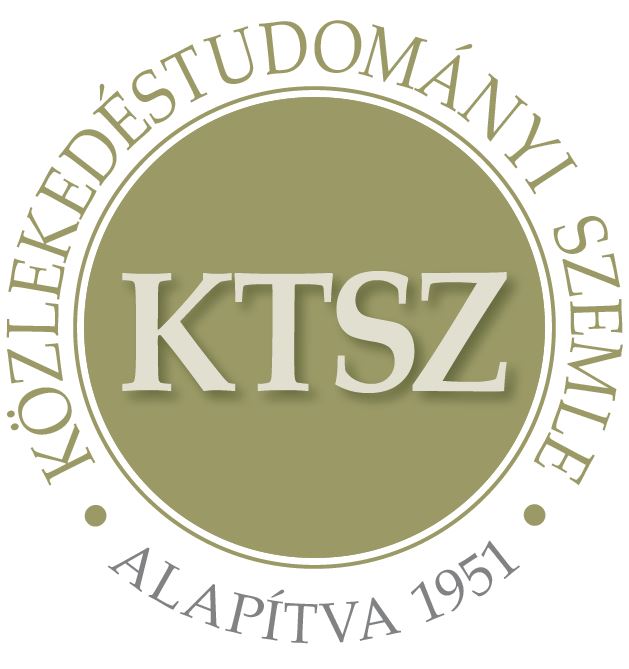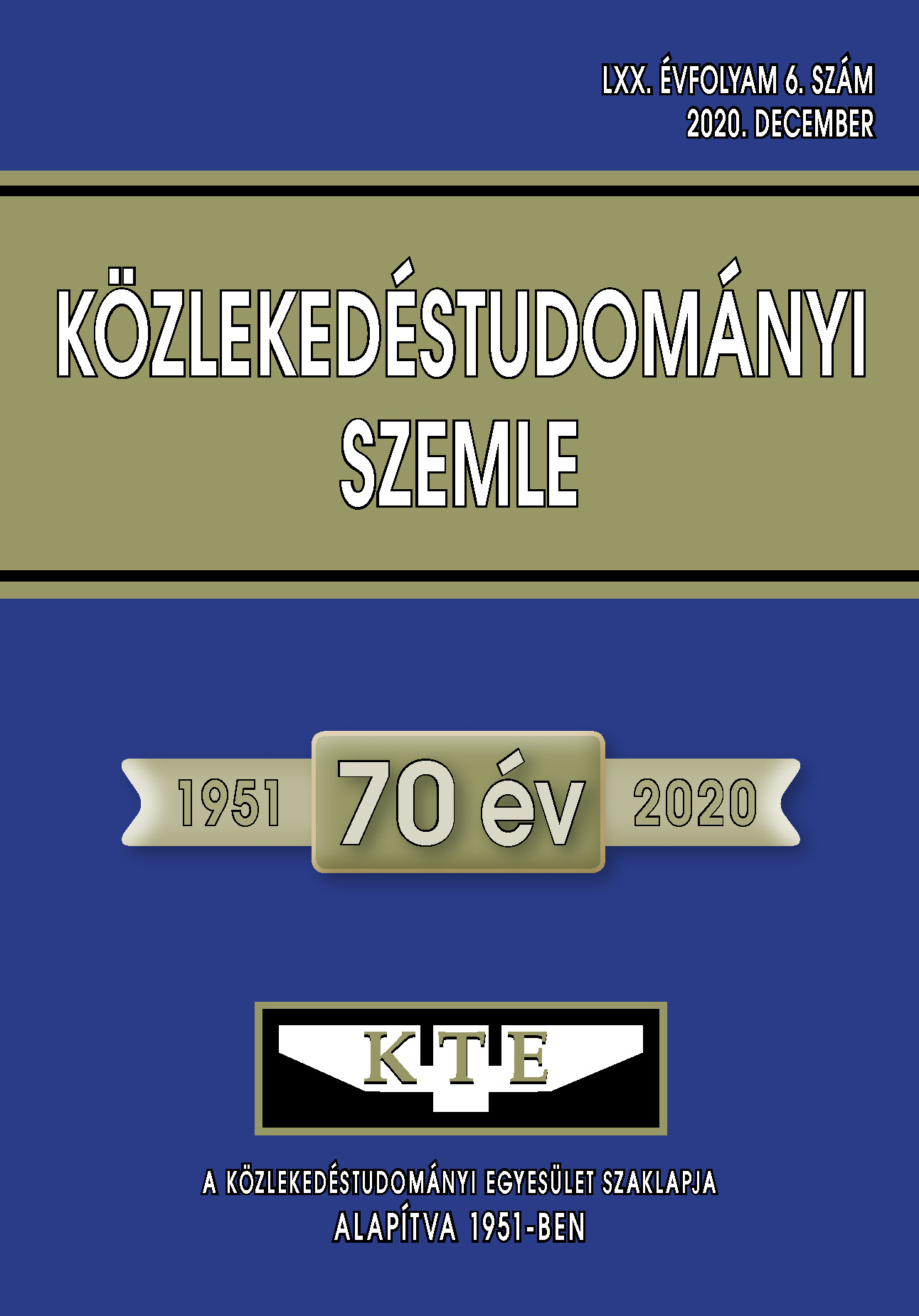Counting forest road users on digital still images by machine learning
Abstract
Mixed use of the forest road network is permitted by law in Hungary. Managers of frequently visited forests should know the traffic of their road network in order to minimize conflicts between the road users. In this article an experimental traffic counter is presented. The tool takes digital still images and is able to assess road user categories and numbers by image recognition. The counter records 1MP images on the signal of a pair of retro-reflexive optical sensors mounted on the roadside. The device had been in operation throughout a year. It was learned that the stable fixing of the sensors and the elevated position of the camera is crucial for the operation. The images were assessed by the adapted version of the YOLO9000, which is a neural net based object detection system. The YOLO9000 was parametrized by humanassessment of 10.000 images of the counter. 94-95% of pedestrians and cyclists while 85% of cars were correctly recognized by the adapted system. Our results showed that it is possible to successfully use free, open-source image recognition tools for visitor counting in a natural environment.
References
Arnberger, A., Eder, R., 2007. Monitoring recreational activities in urban forests using long-term video observation. For. Int. J. For. Res. 80, 1–15. DOI: http://doi.org/dxq36n
Arnberger, A., Haider, W., Brandenburg, C., 2005. Evaluating Visitor-Monitoring Techniques: A Comparison of Counting and Video Observation Data. Environ. Manage. 36, 317–327. DOI: http://doi.org/cbm3w4
Benkhard, B., Szabó, Bence., 2012. Do we need mapping of tourist flows? Lessons from Börzsöny Mountain, in: Fredman, P., Stenseke, M., Liljendahl, H., Mossing, A., Laven, D. (Eds.), Outdoor Recreation in Change – Current Knowledge and Future Challenges. Institute for Landscape Architecture and Landscape Management, Bodenkultur University, Stockholm, Sweden, pp. 374–375.
Campbell, M.J., 2006. Monitoring Trail Use with Digital Still Cameras: Strengths, Limitations and Proposed Resolutions in: Siegrist, D., Clivaz, C., Hunziker, M., Iten, S. (Eds.), Proceedings of the Third International Conference on Monitoring and Management of Visitor Flows in Recreational and Protected Areas. University of Applied Sciences Rapperswil, Rapperswil, Svájc, pp. 317–321.
Cessford, G., Muhar, A., 2003. Monitoring options for visitor numbers in national parks and natural areas. J. Nat. Conserv. 11, 240–250. DOI: http://doi.org/fj2vth
Clawson, M., 1958. Statistics on outdoor recreation. Resources for the future Inc., Washington, USA.
Duke, D., Quinn, M., 2008. Methodological considerations for using remote cameras to monitor the ecological effects of trails users: lessons from research in Western Canada, in: Raschi, A., Trampetti, S. (Eds.), Management for Protection and Sustainable Developement - Proceedings of the Fourth International Conference on Monitoring and Management of Visitor Flows in Recreational and Protected Areas. National Research Council, Institute for Biometeorology, Montecatini Terme, Olaszország.
He, K., Zhang, X., Ren, S., Sun, J., 2015. Deep Residual Learning for Image Recognition. ArXiv151203385 Cs.
Héjj, B., 1987. Az erdei kirándulóforgalom mérése elektronika felhasználásával. Az Erdő 36 (122)., 513-514.
Héjj, B., 1986. Kik látogatják a soproni erdőket? Soproni Szle. 15., 69-78.
James, G.A., Ripley, T.H., 1963. Instructions for Using Traffic Counters to Estimate Recreation Visits and Use (resreport No. SE-3.). U.S. Department of Agriculture, Forest Service, Southeastern Forest Experiment Station, Asheville, NC, USA.
Janowsky, D. v, Becker, G., 2003. Characteristics and needs of different user groups in the urban forest of Stuttgart. J. Nat. Conserv. 11, 251–259. DOI: http://doi.org/c6m238
Keresztesi, B., 1969. FAO-EGB értekezlet az erdők közjóléti szerepének értékeléséről. Az Erdő, 18. (104.) kötet, 7. szám, 298-302. o.
Krizhevsky, A., Sutskever, I., Hinton, G., 2012. ImageNet Classification with Deep Convolutional Neural Networks. Neural Inf. Process. Syst. 25. DOI: http://doi.org/gbhhxs
Miller, A.B., Leung, Y.-F., Kays, R., 2017. Coupling visitor and wildlife monitoring in protected areas using camera traps. J. Outdoor Recreat. Tour. 17, 44–53. DOI: http://doi.org/ggn939
Nagy, G.M., 2015. Soproni erdei közösségi terek vonzerőleltára, in: Bidló, A., Facskó, F. (Eds.), Nyugat-Magyarországi Egyetem Erdőmérnöki Kar, V. Kari Tudományos Konferencia Absztraktkötete. Nyugat-Magyarországi Egyetem Kiadó, Sopron, p. 42.
Nagy, G.M., Héjj, B., 2012. A soproni “városi” erdők terhelésvizsgálatai, in: Fazekas, I., Szabó, V. (Eds.), A Környezettudatos Települések Felé: III.Települési Környezet Konferencia. Meridián Alapítvány, Debrecen, p. 287.
Nagy, G.M., László, R., 2014. A Hidegvíz-völgy turisztikai terhelés vizsgálata, in: Bidló, A., Horváth, A., Szűcs, P. (Eds.), Nyugat-Magyarországi Egyetem, Erdőmérnöki Kar, IV. Kari Tudományos Konferencia. NymE Erdőmérnöki Kar, Sopron, p. 407.
Pápa, M., 1967. Közös úton - Erdészet és turisztika. Az Erdő 16 (102), 206–209.
Redmon, J., Divvala, S., Girshick, R., Farhadi, A., 2015. You Only Look Once: Unified, Real-Time Object Detection. CoRR abs/1506.02640.
Redmon, J., Farhadi, A., 2016. YOLO9000: Better, Faster, Stronger. CoRR.
Russakovsky, O., Deng, J., Su, H., Krause, J., Satheesh, S., Ma, S., Huang, Z., Karpathy, A., Khosla, A., Bernstein, M., Berg, A.C., Fei-Fei, L., 2015. ImageNet Large Scale Visual Recognition Challenge. Int. J. Comput. Vis. IJCV 115, 211252. DOI: http://doi.org/gcgk7w
Szegedy, C., Wei Liu, Yangqing Jia, Sermanet, P., Reed, S., Anguelov, D., Erhan, D., Vanhoucke, V., Rabinovich,
A., 2015. Going deeper with convolutions, in: 2015 IEEE Conference on Computer Vision and Pattern Recognition (CVPR). Presented at the 2015 IEEE Conference on Computer Vision and Pattern Recognition (CVPR), pp. 1–9. DOI: http://doi.org/gftjd8
Tóth, S., 1974. Erdészeti közvéleménykutatás az erdők üdülési funkciójának vizsgálata céljából. Az Erdő 23 (109), 385–391.
Walterné, C.E., 187. Erdei üdülési igények és szokások a Pilisben és a Budai-hegységben. Az Erdő 36 (122), 325–327.
Yuan, S., Maiorano, B., Yuan, M., 1995. Techniques and Equipment for Gathering Visitor Use Data on Recreation Sites. United States Department of Agriculture, Forestry Service.
Articles published electronically are open access (OJS), freely available online and can be downloaded. Authors of articles are not charged any publication or publishing costs (APC). Users have the right to read, download, copy, print, and search the articles, or share the full text with a link.
Authors must declare that their submission has not been previously published in another journal, that financial support has been acknowledged, and that the list of references is complete and accurate, including specification of URLs and DOIs (if available). When submitting a draft article, each author approves the submitted version. Authors guarantee that the article is their original work. Authors are required to participate in the peer review process, follow the advice of reviewers, meet the prescribed deadlines, and, if any, withdraw the submission or correct errors.
All submitted articles are subject to peer review, where the editors request an independent evaluation from at least one expert, ensuring that the reviewer(s) have no conflicts of interest with the authors. The final decision is made by the Editor-in-Chief, who takes into account the evaluations and the suggestions of the editors. The editors and reviewers treat the submission confidentially.
The publisher and editors are committed to maintaining high ethical standards and to preventing publications that involve research misconduct. They follow the COPE guidelines on such ethical issues.
The authors retain copyright and grant the journal the right of first publication under the Creative Commons License (https://creativecommons.org/licenses/by-nc-nd/4.0), which allows others to share the work, while acknowledging the authorship of the work and the first publication in the journal.
The journal archives all published articles, and the journal's owner, the Hungarian Society of Transportation Sciences, will continue to operate the database even if the journal ceases to be published.















